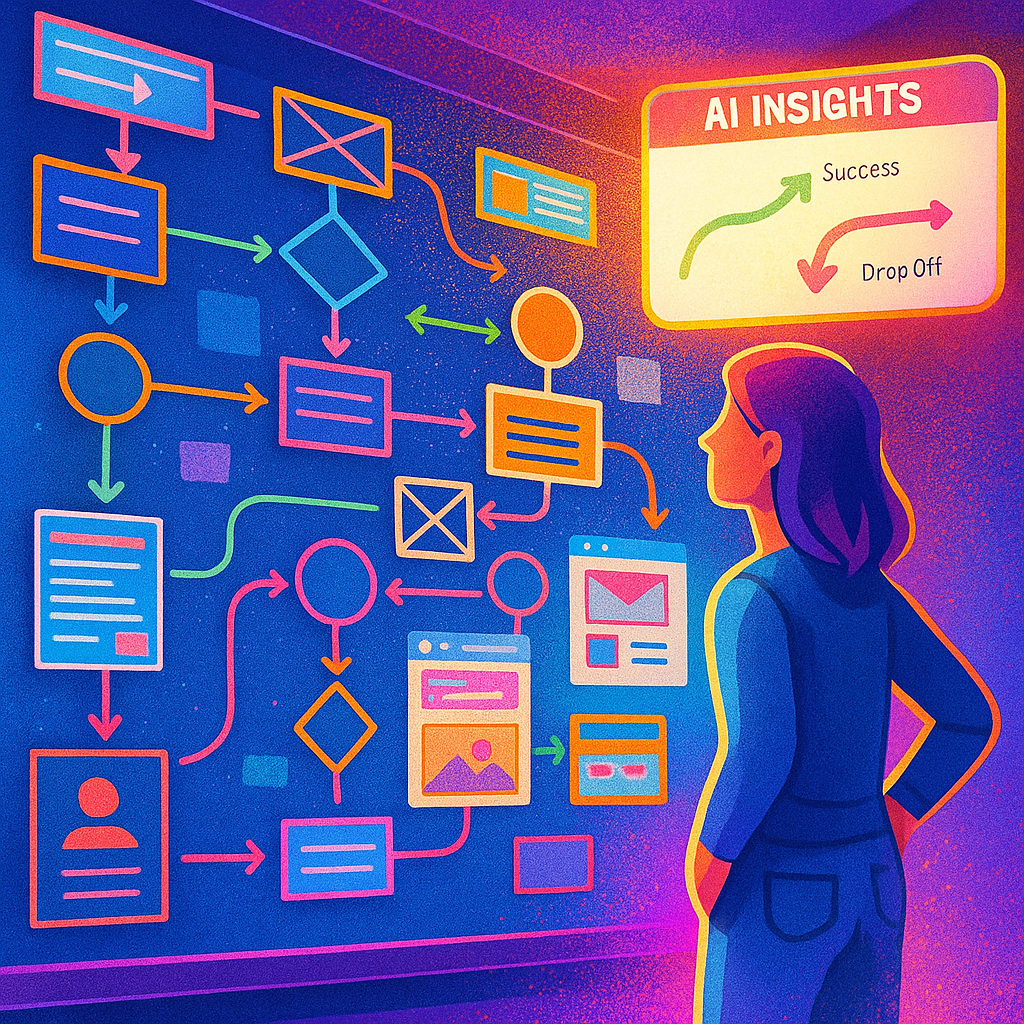Contextual Personas for Edge Devices
by Admin-checker
INDEX
See how Boosta redesigned SaaS user flows in 4 weeks using AI-assisted analysis. Learn what changed, what worked, and what lifted conversions.
Date Jul 25, 2025
INDEX

The actual duration needed to redesign SaaS onboarding processes with AI remains unclear. Boosta collaborated with a mid-sized B2B SaaS platform to determine the duration of this process. The user onboarding process at their company faced three major issues: it took too long and was both complex and leaky.
Using AI-powered flow analysis and UX audits, we helped them:
All in just four weeks.
Here’s how.
The platform offered powerful functionality—but most users never got that far.
Key issues included:
User feedback: “I got lost before I got value.”
We started with a full AI-driven behavioral mapping of:
AI highlighted two key problems:

Based on AI insights, we prototyped:
AI recommended personalized entry points based on past behavior.
For example:
Returning users skipped redundant tooltips—first-timers got full guidance.
We ran experiments comparing:
Key findings:
AI suggested further refinements by segment:
Teams vs solopreneurs behaved very differently in task #3.
After selecting the winning variant, we launched it to 100% of users—but kept AI running in the background.
The AI flagged unexpected post-launch effects:
The client’s words:
“This is the first time onboarding actually felt like a living, responsive part of our product.”
The process of redesigning traditional products requires multiple months while depending heavily on team members’ intuitive judgments.
This 4-week sprint worked because:
The AI system functioned as an enhancement tool for design team decisions rather than replacing them entirely.
SaaS businesses need to deliver value during onboarding because it represents their initial and potentially sole opportunity to prove worth to customers.
This case study shows what’s possible when AI and UX work in sync:
Not only can you move fast—you can move smart.
If your activation funnel feels stuck, maybe it’s time to stop guessing—
and start redesigning with intelligent flow data that shows you exactly what your users need.
Teams use Zapier in boardrooms, spare rooms, and rooms where AI has ROI.